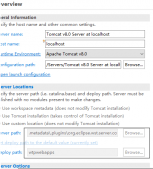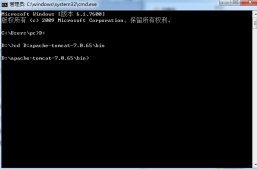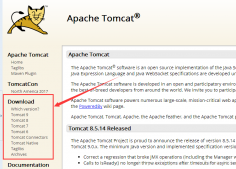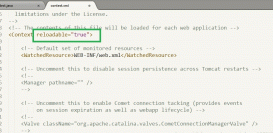项目开发接近尾声,开始着手在生产环境部署项目,开发阶段部署项目都没用nginx。项目是采用SOA架构,多系统开发,主要包括服务系统、中台系统、后台系统、金融系统、接口系统、调度系统、报表系统等。这类分布式的系统,一般也都会用到nginx来做负载均衡。
从公司刚成立就进来,赶鸭子上架来做架构师,负责公司的所有研发事情,搭建公司的整个技术架构,起初的所有核心业务代码基本都由自己亲自把关来进行编码。系统也从最初的只有一个pc端,发展到如今pc中台、后台、android端3个app、iOS端3个app,产品越做越多,亲自负责招聘面试、培训。之前很多时候都有过无助和苦恼,因为负责公司整个架构,又要负责核心业务的编码,技术难点的攻克,新员工的招聘及培训,现在团队已经都发展到16个人,而且这全是研发人员。
回想这一路,觉得之前看似爬不过去的山也不过如此,也许这就是成长吧,成长总是会伴随些许汗水与泪水吧。由于是负责团队的所有事情,所以数据库的维护、迁移数据、建索引等性能优化,项目部署等所有事情必须得一肩挑,不要问我为什么公司没有DBA?为什么没有运维?我真的只能给你一个眼神,让你慢慢去体会。
话不多说,直接开始技术干货分享。
nginx做负载均衡的优势网上有很多介绍资料,这里我不再多做介绍。因为有很多系统要部署,涉及到域名、二级域名、多个域名等的部署。在实际的部署由于对nginx的不够熟悉,遇到过很多坑,其中这种多域名的配置,xxxx.com转发到www.xxxx.com、访问域名转发到tomcat里的项目等,现在先总结一部坑的解决办法。
如将xxxx.com这个域名指向8082端口里的tomcat项目,在做这个介绍前先讲个插曲,如访问xxxx.com需转向到www.xxxx.com,这一点很多人都会忽略。
现在如果要部署中台、后台、金融系统,找到nginx/conf/nginx.conf,修改配置:
|
1
2
3
4
5
6
7
8
9
10
11
12
13
14
15
16
17
18
19
20
21
22
23
24
25
26
27
28
29
30
31
32
33
34
35
36
37
38
39
40
41
42
43
44
45
46
47
48
49
50
51
52
53
54
55
56
57
58
59
60
61
62
63
64
65
66
67
68
69
70
71
72
73
74
75
76
77
78
79
80
81
82
83
84
85
86
87
88
89
90
91
92
93
94
95
96
97
98
99
100
101
102
103
104
105
106
107
108
109
110
|
upstream web{ server localhost:8082;}upstream admin{ server localhost:8083;}upstream finance{ server localhost:8084;}server { listen 80; server_name finance.xxxx.com; #charset koi8-r; #access_log logs/host.access.log main; location / { proxy_pass http://finance; proxy_set_header Host $http_host; proxy_set_header X-Real-IP $remote_addr; proxy_set_header X-Forwarded-For $proxy_add_x_forwarded_for; } #error_page 404 /404.html; # redirect server error pages to the static page /50x.html # error_page 500 502 503 504 /50x.html; location = /50x.html { root html; }}server { listen 80; server_name www.xxx.com; #charset koi8-r; #access_log logs/host.access.log main; location / { proxy_pass http://web; proxy_set_header Host $http_host; proxy_set_header X-Real-IP $remote_addr; proxy_set_header X-Forwarded-For $proxy_add_x_forwarded_for; } #error_page 404 /404.html; # redirect server error pages to the static page /50x.html # error_page 500 502 503 504 /50x.html; location = /50x.html { root html; } # proxy the PHP scripts to Apache listening on 127.0.0.1:80 # #location ~ \.php$ { # proxy_pass http://127.0.0.1; #} # pass the PHP scripts to FastCGI server listening on 127.0.0.1:9000 # #location ~ \.php$ { # root html; # fastcgi_pass 127.0.0.1:9000; # fastcgi_index index.php; # fastcgi_param SCRIPT_FILENAME /scripts$fastcgi_script_name; # include fastcgi_params; #} # deny access to .htaccess files, if Apache's document root # concurs with nginx's one # #location ~ /\.ht { # deny all; #}}server { server_name xxxx.com; rewrite ^(.*) http://www.xxxx.com$1 permanent;}server { listen 80; server_name admin.xxxx.com; #charset koi8-r; #access_log logs/host.access.log main; location / { proxy_pass http://admin; proxy_set_header Host $http_host; proxy_set_header X-Real-IP $remote_addr; proxy_set_header X-Forwarded-For $proxy_add_x_forwarded_for; } #error_page 404 /404.html; # redirect server error pages to the static page /50x.html # error_page 500 502 503 504 /50x.html; location = /50x.html { root html; } # proxy the PHP scripts to Apache listening on 127.0.0.1:80 # #location ~ \.php$ { # proxy_pass http://127.0.0.1; #} # pass the PHP scripts to FastCGI server listening on 127.0.0.1:9000 # #location ~ \.php$ { # root html; # fastcgi_pass 127.0.0.1:9000; # fastcgi_index index.php; # fastcgi_param SCRIPT_FILENAME /scripts$fastcgi_script_name; # include fastcgi_params; #} # deny access to .htaccess files, if Apache's document root # concurs with nginx's one # #location ~ /\.ht { # deny all; #}} |
上面的配置还包括了访问xxxx.com转向www.xxxx.com的配置,如下:
|
1
2
3
4
|
server { server_name xxxx.com; rewrite ^(.*) http://www.xxxx.com$1 permanent; } |
nginx的基本配置大致就是这样,如果绑定多个域名(不管是一级域名还是二级域名),需配置多个server,你会发现这几个server配置都差不多,主要是更改server_name及proxy_pass指向即可。upstream节点其实就是代理服务的访问路径。
如果此时访问域名,你会发现nginx的配置生效了,只是目前显示的是tomcat的默认界面。nginx的配置基本就这样了,接下来对tomcat做些配置的修改。找到tomcat里的conf/server.xml,注释掉默认的Host配置,添加如下Host配置:
|
1
2
3
4
5
6
|
<Host name="localhost" appBase="E:\tomcat\apache-tomcat-8.0.35-8082\webapps\web" deployOnStartup ="false" autoDeploy="false" unpackWARs="true"> <Context path="/" docBase="E:\tomcat\apache-tomcat-8.0.35-8082\webapps\web" /> <Valve className="org.apache.catalina.valves.AccessLogValve" directory="logs" prefix="localhost_access_log" suffix=".txt" pattern="%h %l %u %t "%r" %s %b" /></Host> |
以上是windows服务器下的配置,如为linux,只需更改appBase和docBase,指向项目的路径。tomcat的配置也已经完成,重启tomcat,访问域名就指向了tomcat里的项目。
总结
以上所述是小编给大家介绍的nginx+tomcat单个域名及多个域名配置,希望对大家有所帮助,如果大家有任何疑问请给我留言,小编会及时回复大家的。在此也非常感谢大家对服务器之家网站的支持!
原文链接:http://www.cnblogs.com/heyonggang/archive/2017/12/01/7941099.html



















